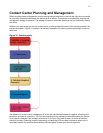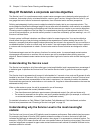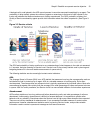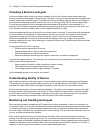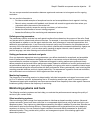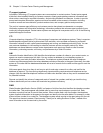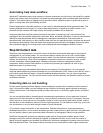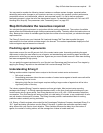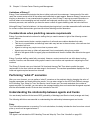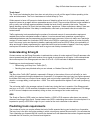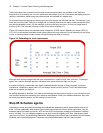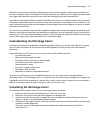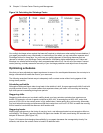Step #2 Collect data 27
Automating help desk workflow
Agents at IT help desks require quick access to customer information and call history, and the ability to rapidly
log all of the support calls and incidents. Advanced help desk packages offer automated desk help workflow
systems. They assist agents in logging service requests (tickets), dispatching them to prioritized queues or
agents, tracking them, and documenting activities.
External applications, help desk operators, or end users (in web-based applications) generate tickets. The
system generates them manually, or in some cases automatically, in response to system events. It can
correlate multiple incidents with single tickets, and multiple problems with a single call.
Automated help desk workflow systems track each step taken in answering a call, with automatic time
stamping of all of the referrals, escalations, reminders, alerts, and email notifications. Calls are prioritized and
referred to other departments without reassignment, reassigned (escalated) to other technicians or
specialized staff, and placed in an alert condition when they are not resolved promptly. Activities are date and
time stamped automatically. Most help desks offer outgoing email notification and paging. Some help desks
offer automated logging of incoming emails, and automated call acknowledgment emails to clients.
Step #2 Collect data
Telephone systems generate an enormous amount of real-time and historical data used in planning and
management of your contact center. You use real-time data to monitor the current Call Load and agent
availability so minute-to-minute adjustments can be made. You use historical information in forecasting,
staffing, and scheduling. Other critical management information comes from customer surveys, market
studies, employees, external departments, telephone networks, workforce management systems,
competitors, and the media. Data collection is a continuous process you implement as soon as your
telephone system is up and running.
Telephone systems provide detailed report data on every aspect of call transactions. You can program
computer-based telephone systems connected to a Local Area Network (LAN). Users on the LAN can view or
print real-time and historical reports. Using web-enabled telephone systems, you can view and generate
reports in a Web browser. You can monitor contact center activities remotely, and distribute reports to people
on different networks.
Collecting data on call handling
Contact center reporting software displays real-time telephone system data on desktop monitors and wall
signs. Using real-time data, you can manage current conditions and ensure agents respond to changing
contact center events. The telephone system provides information on call activity, agent activity, and queue
activity.
You can use historical data in forecasting and in assessing the performance of your resources. Historical
reports provide vital information on load activity, resource activity, and queue activity. For example, resource
activity reports on trunks can tell you the highest number of trunks used during peak traffic periods, and the
total duration of calls handled by each trunk for the reporting period. You can determine how busy your trunks
are, and whether or not you have the right number of trunks scheduled.
CTI provides in-depth information on call transactions. Detailed information on keystroke sequences,
databases searched on, and on-screen assistance provides a clear picture of agent activities. Using ANI data,
you can identify callers by area code and collate information on demographic trends in caller behavior.
Workforce management systems use telephone system data to forecast and schedule agents. Some
packages monitor the real-time adherence of agents to scheduled activities, so you know the number of
agents currently logged on and available to handle calls. Workforce management systems collect and store
real-time adherence data. This data provides a historical account of adherence used in agent assessment.





